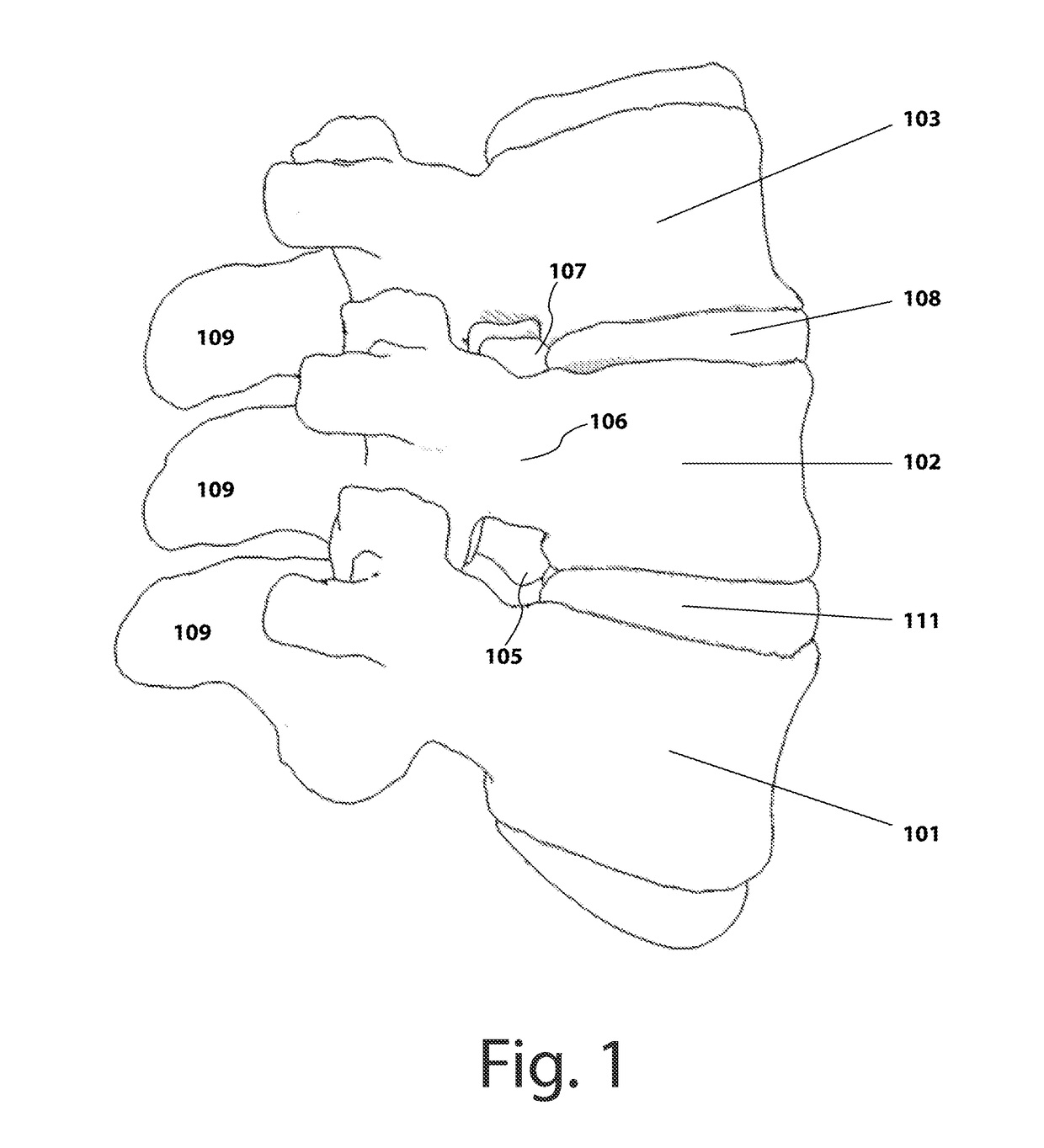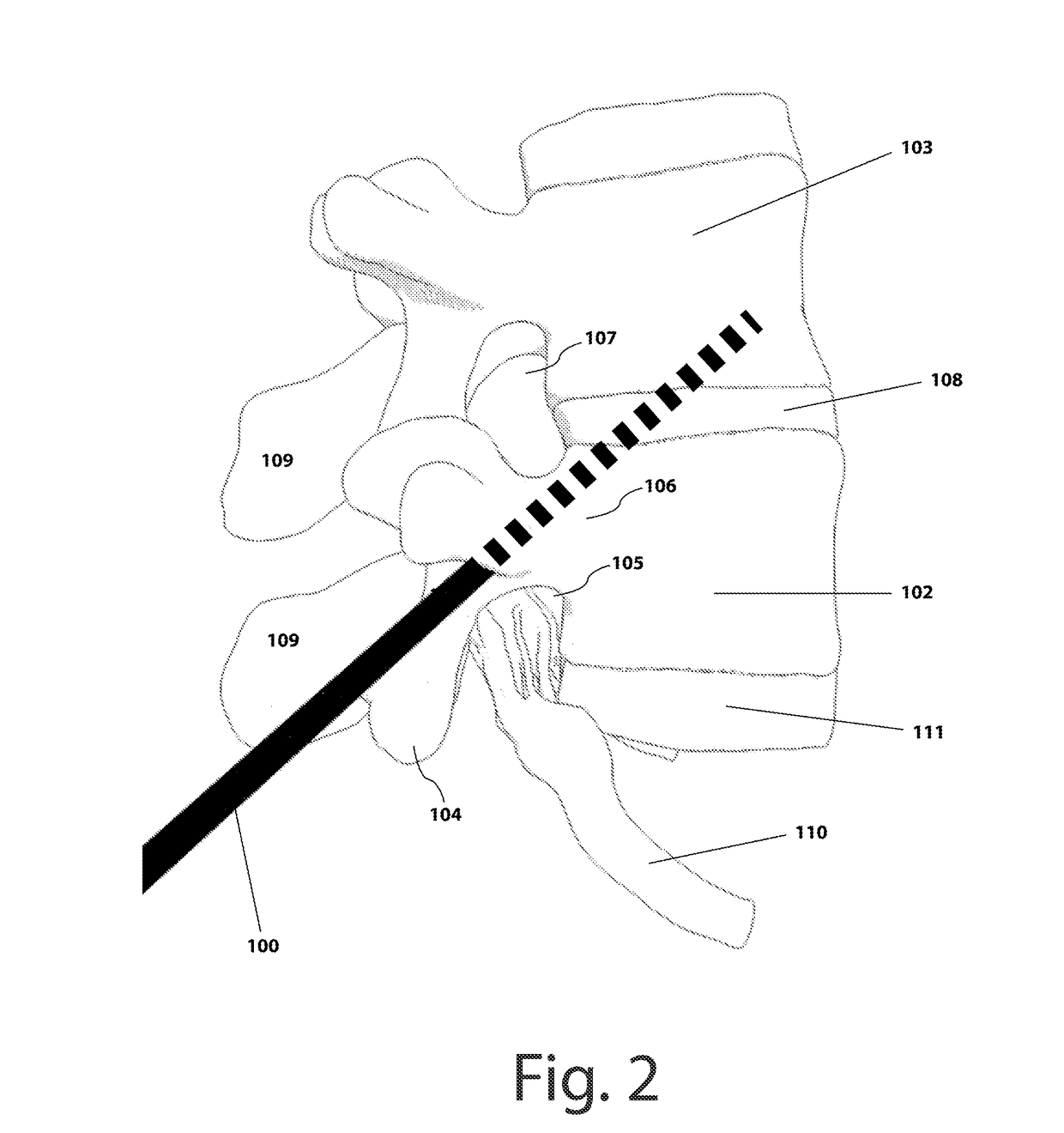Rodless bivertebral transpedicular fixation with interbody fusion
a technology of interbody fusion and transpedicular fixation, which is applied in the field of transpedicular fixation with interbody fusion, can solve the problems of limited visibility, high risk of infection, and surgeons being very close to nerves with surgical tools, so as to reduce the size of the incision required, reduce the risk of nerve damage during surgery, and increase the risk of nerve damag
- Summary
- Abstract
- Description
- Claims
- Application Information
AI Technical Summary
Benefits of technology
Problems solved by technology
Method used
Image
Examples
Embodiment Construction
[0041]Descriptions of certain embodiments serve as examples and do not encompass the entirety of all possible manifestations of the invention. One skilled in the art appreciates that multiple variations of the embodiments enclosed herein may encompass the same inventive concept.
[0042]Embodiments are principally concerned with addressing severe spinal deformations by using minimal hardware and causing minimal amount of trauma to a patient. This is accomplished through the use of a specific path through the patient's vertebral column, either in an inferior-to-superior trajectory 100 or superior-to-inferior trajectory 112, and an implant device.
[0043]For the purposes of description in these embodiments, a reference lumbar vertebra appropriate for a given surgery is referred to as Ln 101, as seen in FIG. 1. Other vertebrae reference this position and decrement the number, indicating cranial direction from Ln 101. For example, if Ln 101 refers lumbar vertebra 4 (L4) in a particular patie...
PUM
 Login to View More
Login to View More Abstract
Description
Claims
Application Information
 Login to View More
Login to View More - R&D
- Intellectual Property
- Life Sciences
- Materials
- Tech Scout
- Unparalleled Data Quality
- Higher Quality Content
- 60% Fewer Hallucinations
Browse by: Latest US Patents, China's latest patents, Technical Efficacy Thesaurus, Application Domain, Technology Topic, Popular Technical Reports.
© 2025 PatSnap. All rights reserved.Legal|Privacy policy|Modern Slavery Act Transparency Statement|Sitemap|About US| Contact US: help@patsnap.com



